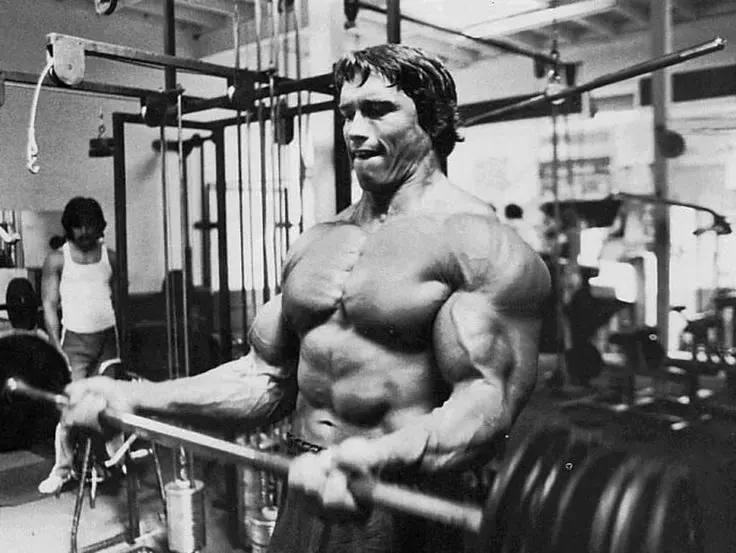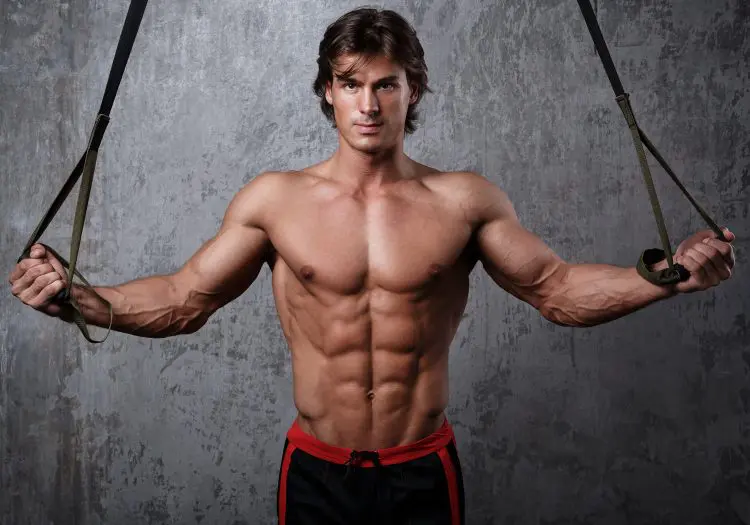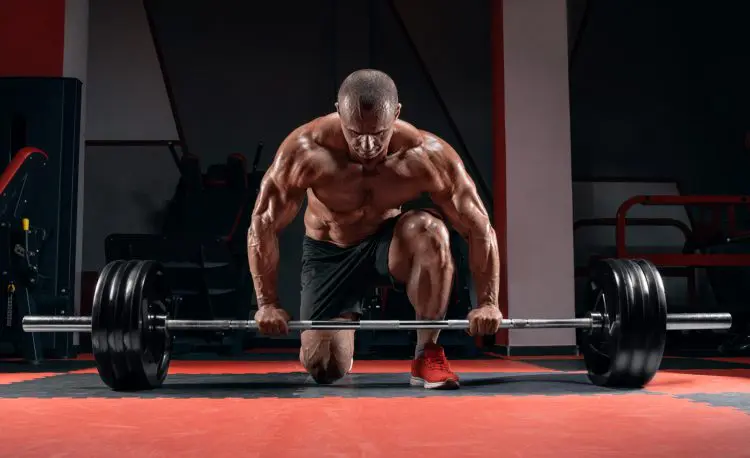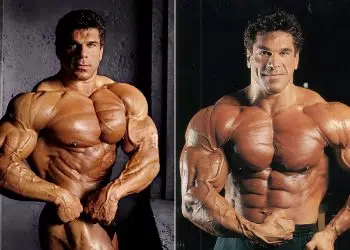Ask most exercisers what the best way to organize your workouts is, and they’ll probably tell you to use a split routine. When you follow a split routine, each workout is dedicated to just a couple of muscle groups, with each one trained 1-2 times per week.
For example:
| Mon | Tue | Wed | Thu | Fri | Sat | Sun |
| Chest and Triceps | Back and Biceps | Rest | Legs and Abs | Rest | Shoulders and Arms | Rest |
| Or: | ||||||
| Chest, Shoulders, and Triceps | Back and Biceps | Legs and Abs | Chest, Shoulders, and Triceps | Back and Biceps | Legs and Abs | Rest |
However, just because most people tend to gravitate toward split routines doesn’t mean you have to be one of them. In fact, for a lot of lifters, full-body workouts may be a better option.
Read more about split routines here.
In this article, we reveal the advantages and benefits of full-body workouts, explain how to write them, and provide you with several examples to try.
Full Body Workout Advantages and Benefits
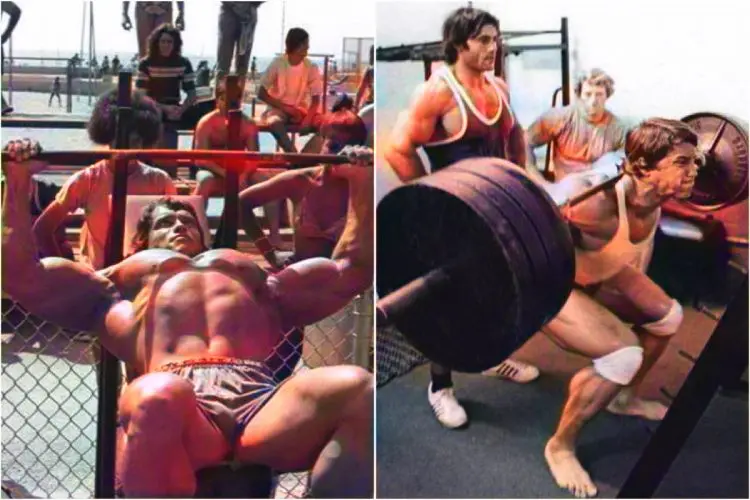
Level Up Your Fitness: Join our 💪 strong community in Fitness Volt Newsletter. Get daily inspiration, expert-backed workouts, nutrition tips, the latest in strength sports, and the support you need to reach your goals. Subscribe for free!
A lot of exercisers view full-body workouts as something that only beginners should do. In actuality, full-body workouts can be useful for beginner, intermediate, and even advanced exercisers when used properly. Even Arnold Schwarzenegger used full-body workouts to build his legendary physique, and you’d be hard-pushed to call HIM a beginner, right?!
So, before you dismiss full-body workouts, consider these advantages and benefits:
1. Fewer workouts per week
Most split routines involve 4-6 workouts per week. With full-body training, you only need to hit the gym 2-3 times a week, making them a good option for time-pressed exercisers.
2. Increased training frequency per muscle group
A lot of split programs train major muscle groups just once a week. This may not be enough for optimal progress. With full-body workouts, you hit each major muscle group every time you work out, which may produce better results.
3. Burn more calories
Full-body workouts burn a lot of calories. While a leg or back and biceps workout uses a lot of energy, something like a shoulders and arms or arms and abs workout will not. If you want to lose fat and control your weight, full-body workouts may be your best choice.
4. More free time for other activities
Compared to something like a five or six-day training split, full-body workouts leave you more free time for other activities, such as cardio, playing sports, or just resting. If you want to work out with weights but also have interests outside the gym, full-body workouts may be the way to go.
5. A balanced training week even if you miss a workout
When you follow a split routine, especially one where you hit each muscle group just once per week, a missed workout will unbalance your entire training week. For example, if you miss your leg workout, it could mean that you don’t train your lower body for 14 days or more. With full-body workouts, if you miss one training session, you should still be able to train your major muscles 1-2 times that week, maintaining your progress.
Full Body Workout Routine Design Rules + Template
We’ve got a few sample workouts for you to try below, but you’ll probably get better results if you learn to write your own. That way, you can adapt this effective training system to match your needs and preferences.
Increase your chances of writing effective full-body workouts by following these program design rules:
1. Plan on training 2-3 days per week
Ideally, you should hit the gym 2-3 times per week on non-consecutive days, such a Monday, Wednesday, and Friday or Tuesday and Saturday. Training two days in a row is NOT recommended, as you won’t have time to recover between workouts.
2. Start your workout with the biggest/most demanding exercises
Full-body workouts can be tiring. Make the most of your energy by doing your most challenging exercises at the start and leaving easier exercises to the end. This usually means training legs first and core/arms last.
3. Focus on compound exercises
Unless you want your workout to last two hours or more, you need to build your full-body workouts around multi-joint compound exercises. This will save you time and energy. For example, you could do squats, or leg extensions, leg curls, hip abductions, hip adductions, hip thrusts, and lower back hyperextensions to train the same muscles. Compound exercises are MUCH more time-efficient!
4. One exercise per muscle group
You probably won’t have the time or energy to hit each muscle group with multiple exercises. Pick one compound exercise per major muscle group, choosing moves that deliver a lot of bang for their buck. The only real exception for this is the lower body.
For your legs, try and select a quad-dominant exercise (e.g., squats) and a hip dominant exercise (e.g., Romanian deadlifts) to work all your major leg muscles equally. You may also want to make one of your leg exercises unilateral (single-limbed).
5. Avoid overlapping exercises
Make sure you can put more effort into each exercise by avoiding overlaps. For example, if you did bench press followed by overhead presses, your shoulders and triceps would be tired, so you won’t be able to do justice to the second exercise. A better order would be something like bench presses followed by bent-over rows.
6. Train opposing muscle groups equally
Muscles are arranged in pairs on opposite sides of joints. For example, the biceps and triceps, quadriceps and hamstrings, anterior and posterior deltoids. Build a balanced physique by training opposing muscle groups equally. This usually means doing the same number of pushing exercises as pulling.
Level Up Your Fitness: Join our 💪 strong community in Fitness Volt Newsletter. Get daily inspiration, expert-backed workouts, nutrition tips, the latest in strength sports, and the support you need to reach your goals. Subscribe for free!
7. Core and arms last
While every compound exercise has an identifiable agonist or prime mover, most exercises also involve synergists and stabilizes. In pushing exercises, such as overhead presses and bench presses, the triceps are also involved, while pull-ups and rows also work your biceps. Most free weight leg exercises also train your core muscles.
Leave these synergists to the end of your workout to make sure you don’t fatigue them and impede your performance of your main compound exercises. In some instances, they may not need to be trained at all.
8. Adjust your reps, sets, and weights to match your training goal
Don’t just do the old standard of three sets of ten for your full-body workouts. Instead, adjust your rep scheme to reflect your training goal, i.e.:
- Strength/Power – 1-5 reps, 85%+ of your one-repetition maximum (1RM)
- Hypertrophy – 6-12 reps, 67-85% of your 1RM
- Endurance – 13-20 reps, 50-67% of your 1RM
You can also mix and match your set and rep scheme as you progress through your workout. For example, you might do three sets of 4-6 reps for the first three exercises, but just two sets of 6-12 reps for those coming later.
9. Create several full-body workouts and use them in rotation
Doing the same full-body workout over and over again will soon get old. Prevent boredom and plateaus by creating two or more full-body workouts and using them in rotation.
For example:
| Mon | Tue | Wed | Thu | Fri | Sat | Sun |
| Full-body workout 1 | Rest | Full-body workout 2 | Rest | Full-body workout 3 | Rest | Rest |
| Or: | ||||||
| Full-body workout 1 | Rest | Full-body workout 2 | Rest | Full-body workout 1 | Rest | Rest |
Workout Template
Here’s a fool-proof template to make designing full-body as easy as possible. Just slot your favorite exercises into this table, add your preferred set and rep scheme, and you’re ready to go!
| Exercise | Examples | |
| 1 | Compound leg | Squats, leg press, deadlift |
| 2 | Horizontal push | Bench press, dip, push-up, chest press |
| 3 | Horizontal pull | Seated row, bent-over row, Kroc row |
| 4 | Secondary leg | Romanian deadlift, split squat, lunge |
| 5 | Vertical push | Barbell shoulder press, dumbbell shoulder press |
| 6 | Vertical pull | Lat pull-down, pull-up, chin-up |
| 7* | Triceps | Triceps pushdown, skull crusher, French press |
| 8* | Biceps | Dumbbell curl, barbell curl, preacher curl |
| 9* | Anterior core | Roll-out, cable crunch, plank, sit-up |
| 10* | Lower back | 45-degree back extension, skydiver |
* Because the biceps, triceps, and core muscles are trained indirectly during the various compound exercises, it’s not always necessary or beneficial to train them during a full-body workout. If you prefer, it may be better to do extra sets of the more productive compound exercises rather than train these smaller muscles in isolation.
Full Body Gym Workouts
You now have all the information you need to create your very own full-body workouts. But, to save you the trouble, here is a selection of whole-body workouts to try. Each one uses slightly different training approaches to illustrate just how flexible full-body training can be. Just add your preferred set and rep scheme to ensure that your chosen workout will produce the results you want.
But, before you start any of these workouts, make sure you prepare your body and mind by warming up properly. Do 5-10 minutes of easy cardio followed by a few dynamic mobility and flexibility exercises. Also, do a couple of light sets of the main exercises in your chosen workout to ready yourself for lifting heavier weights.
1. Super-abbreviated full-body workout
This workout is ideal for when you are short on training time. While not perfectly balanced, all major muscles are trained reasonably equally over the course of the week. Each workout should take 40 minutes or less.
| Monday | Wednesday | Friday | |
| 1 | Squat | Deadlift | Bulgarian split squat |
| 2 | Bench press | Overhead press | Close-grip bench press |
| 3 | Bent-over row | Pull-up | Pendlay row |
2. Barbell-only full-body workout
No bench or dumbbells? No problem! You can still get a great workout using nothing but a barbell.
| No. | Exercise |
| 1 | Front squat |
| 2 | Floor press |
| 3 | Yates row |
| 4 | Romanian deadlift |
| 5 | Overhead press |
| 6 | Upright row |
| 7 | Skull crusher |
| 8 | Barbell curl |
| 9 | Barbell rollout |
| 10 | Good morning |
3. Full-body strength and power workout
This workout uses both explosive lifts and strength exercises to improve athletic performance. If you play sports, this is the workout for you.
| No. | Exercise |
| 1 | Power clean |
| 2 | Plyo push-ups |
| 3 | Weighted pull-up |
| 4 | Box jump |
| 5 | Push-press |
| 6 | High-pull |
| 7 | Sit-up throw |
| 8 | Kettlebell swing |
4. Full-body dumbbell workout
If you work out at home, it’s entirely possible that you only have a bench and dumbbells in your gym. This needn’t be a drawback, and you can have a very productive full-body workout with just a bench and dumbbells.
| No. | Exercise |
| 1 | Goblet squat |
| 2 | Incline dumbbell press |
| 3 | Single-arm row |
| 4 | Lunge |
| 5 | Dumbbell overhead press |
| 6 | Renegade row |
| 7 | Dumbbell skull crusher |
| 8 | Dumbbell curl |
| 9 | Side bend |
| 10 | Weighted crunch |
5. Home full-body workout routine
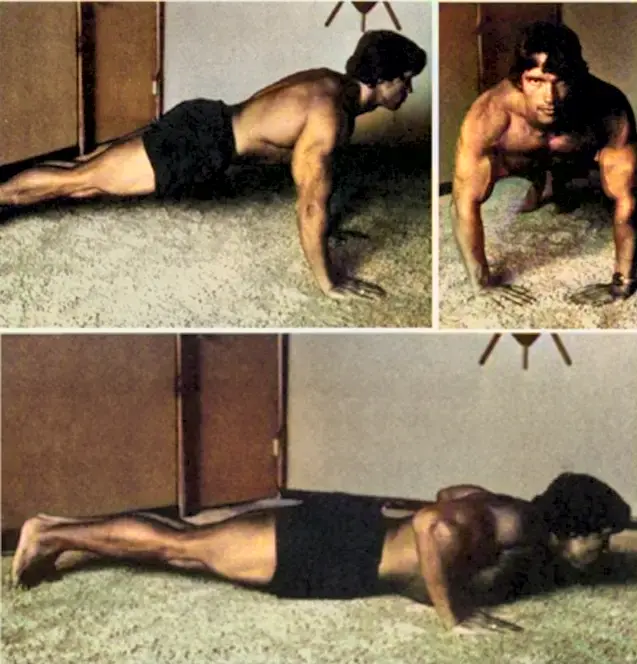
You can use full-body workouts at home as well as in a gym. You don’t need weights for this workout, but you will need somewhere to do pull-ups and body rows.
| No. | Exercise |
| 1 | Squat jump |
| 2 | Push-up |
| 3 | Pull-up |
| 4 | Hip thrust |
| 5 | Pike push-up |
| 6 | Body row |
| 7 | Flutter kick |
| 8 | Prone back extension |
Full Body Workout Plan – Wrapping Up
Full-body workouts are not just for beginners. While split routines are arguably the best choice for bodybuilders, general exercisers and fitness enthusiasts may get better results from full-body workouts. Bodybuilders can use them too when they need a change of pace or just don’t have the time to work out six times a week.
The key to successful full-body training is following a well-designed workout. If you try and cram too many exercises into your workout, you probably won’t have the time or energy to complete it. Order matters too, and putting the wrong exercises next to one another could make your workout much less productive.
The good news is that writing full-body workouts is not all that difficult and should be a skill that most people can master. Use the guidelines, template, and examples in this article to start creating your very own full-body workouts.


